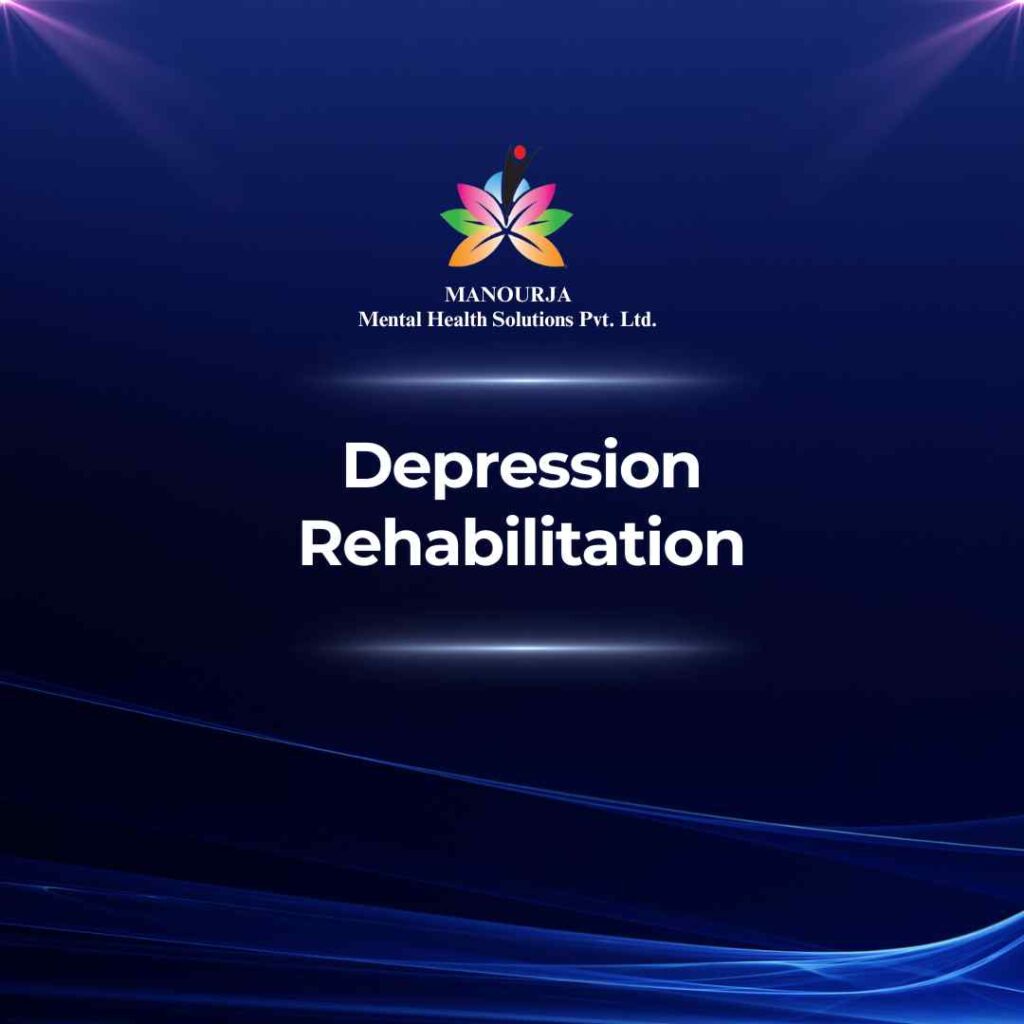Depression Rehabilitation

Depression can manifest through various symptoms that affect one’s mood, body, and thoughts. If you or someone you know is experiencing these signs, considering the right form of psychosocial rehabilitation is crucial:
- Persistent Sadness or a Hollow Feeling: This isn’t just a fleeting blue mood but a deeper, pervasive feeling of despair.
- Loss of Interest in Favorite Activities: There’s a noticeable retreat from activities that once brought joy.
- Significant Weight Fluctuations: This includes both unexpected weight gain and loss that are not linked to diet changes.
- Sleep Disturbances: Experiencing either insomnia or feeling the need to sleep excessively.
- Fatigue: This is a type of exhaustion that rest doesn’t cure, often leaving one feeling perpetually drained.
- Feelings of Worthlessness or Excessive Guilt: Harsh self-criticism and unwarranted guilt are common.
- Trouble Concentrating: Difficulty focusing or making decisions is a frequent issue.
- Thoughts of Death or Suicide: These may include not just fleeting thoughts but persistent contemplation of death or suicidal planning.
Choosing the Right Path: OPD vs. IPD
Outpatient (OPD) Psychosocial Rehabilitation
- Ideal for Milder Cases: OPD works best when depression symptoms are present but manageable without constant supervision.
- Relies on a Strong Support System: This setup is effective when there’s a robust network of support at home or in close proximity.
- Success in Past Outpatient Treatments: If previous outpatient care has been beneficial, continuing in a similar setup may be advantageous.
Inpatient (IPD) Psychosocial Rehabilitation
- Suited for Severe Depression: IPD is recommended for intensive symptoms that severely disrupt daily life and may include psychosis or significant risk of self-harm.
- Necessary for Safety Reasons: If there’s any risk to oneself or others, the controlled environment of IPD is safer.
- Required in Absence of Support: When the home environment is not conducive to recovery, IPD provides the necessary structure and support.
How Psychosocial Rehabilitation Helps
Psychosocial rehabilitation in both OPD and IPD settings focuses on restoring an individual’s functioning and improving their quality of life. The core elements include:
- Developing Essential Skills: Rehabilitation teaches practical skills for daily living and symptom management, enhancing independence.
- Building and Enhancing Social Networks: It aims to strengthen existing social supports and helps forge new connections that encourage recovery.
- Implementing Therapeutic Strategies: Techniques such as Cognitive Behavioral Therapy (CBT) are commonly used to alter detrimental thought patterns and behaviors.
MANOURJA’s Rehabilitation Techniques and Steps
At MANOURJA, we employ a combination of scientifically-backed techniques and personalized care:
- Cognitive Behavioral Therapy (CBT): This helps patients identify and challenge negative thoughts to change behaviors effectively.
- Vocational Training: Assisting patients in gaining skills necessary for employment, facilitating easier reintegration into society.
- Creative Therapies: Art and music therapies are incorporated to provide outlets for expression and emotional exploration.
Rehabilitation Process
- Initial Assessment: Each patient undergoes a thorough evaluation to understand their specific needs.
- Goal-setting: Together with the patient, we set realistic and personalized goals.
- Tailored Intervention Plans: We design interventions that specifically address the identified needs.
- Active Implementation: These plans are put into action with continuous monitoring.
- Ongoing Evaluation: Adjustments are made based on the patient’s progress and feedback.
This nuanced approach ensures that each individual’s unique needs are met, whether through OPD or IPD, with a focus on fostering a gradual and sustainable return to everyday life.
“Every step you take is a step towards regaining your life. Believe in your journey.”
